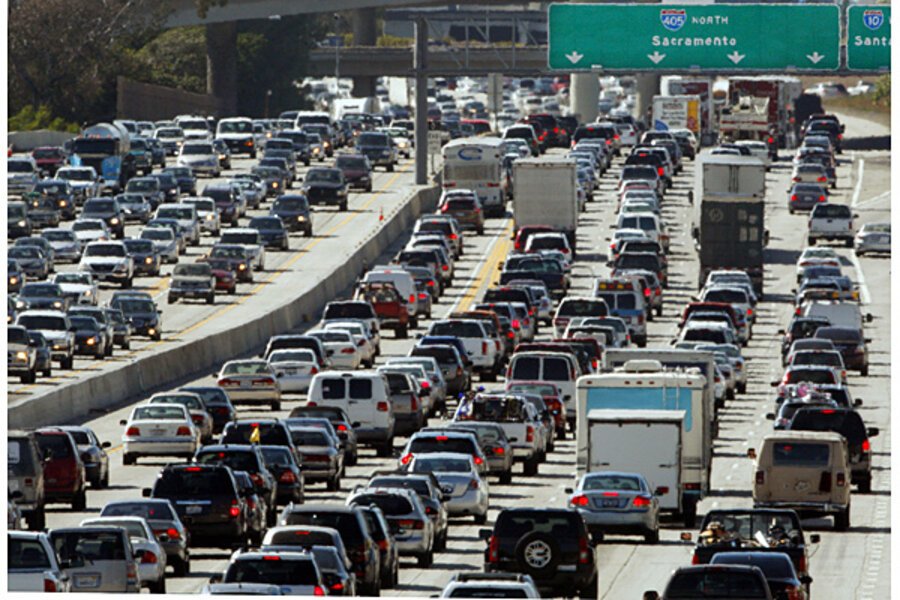Cars are getting greener. What about roads?
Loading...
It was the terrible smog of cities like Los Angeles in the 1970s that prompted a huge change in the efficiency and pollution controls of automobiles. Today, cars are many orders of magnitude cleaner than their counterparts from previous decades.
But what if our roads could help further? No, not by reducing congestion (though that would be nice), but by swallowing up the pollutants pumped out by cars.
The sidewalks in one Dutch neighborhood are doing just that.
The Los Angeles Times reports that scientists at the Eindhoven University of Technology in the Netherlands have discovered a way of using air-purifying pavements to cut pollution by half.
A layer of titanium oxide is used to cover paving slabs. This layer combines with chemicals in the air, turning them into less harmful substances.
One of the pollutants reduced most by the coating is NOx, or oxides of nitrogen. NOx reacts with other pollutants in the air to form smog, and is a major component of automotive exhaust. Using a nearby uncoated pavement as a control test, the scientists saw a 45 percent NOx reduction in "ideal weather", and a 19 percent reduction over the course of a day.
Potentially, other chemically-engineered surfaces could be used to remove other pollutants from the air, particularly around major routes.
The issue, for the time being at least, is cost--titanium isn't the cheapest of materials, and covering every road in the land with pollution-reducing chemicals could be prohibitively expensive.
Producing those chemicals in the first place is the other elephant in the room--such a process would need to be scrutinized to ensure it wasn't an environmental liability itself. Still, if such coatings took the form of a simple spray for a nation's highways and byways, at least it wouldn't require the removal and replacement of entire roads...
The researchers' findings are published in the Journal of Hazardous Materials.







